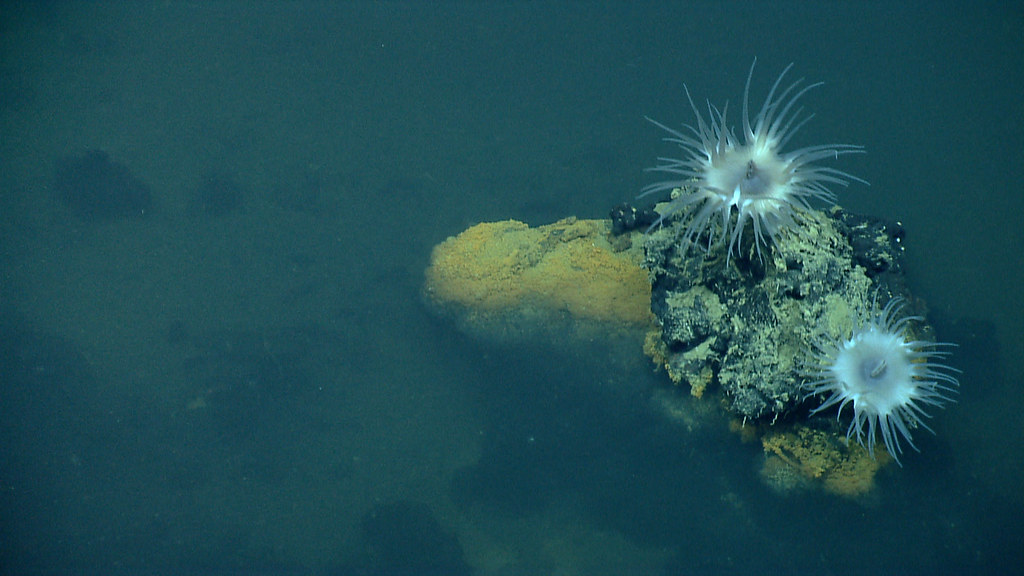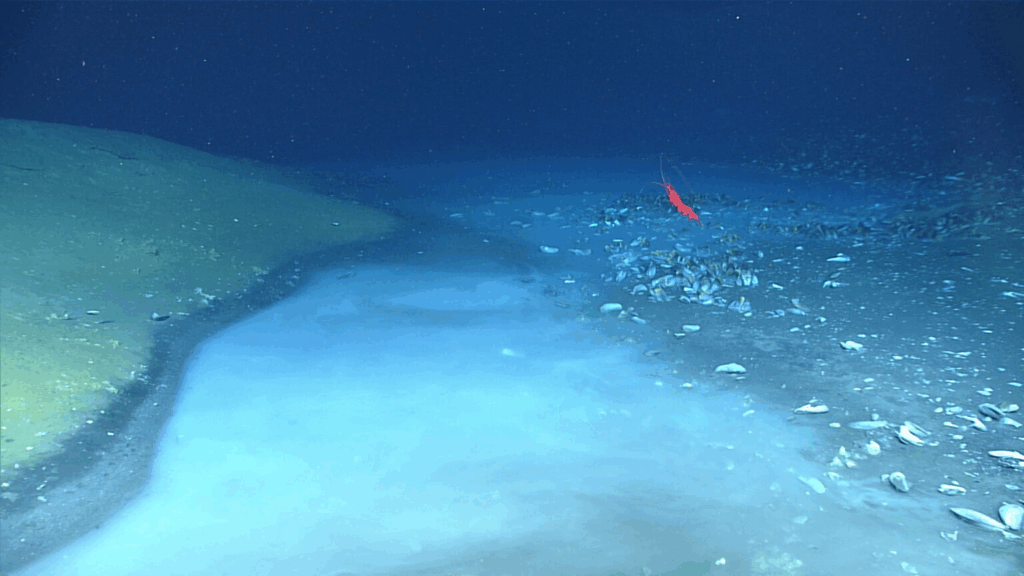Deep beneath the surface, high salinity, anoxic underwater lakes harbor the remains of marine organisms that were not equipped to handle the harsh conditions of these pools. Although there are not many overall, brine pools are most commonly found in the Red Sea, followed by the Gulf of Mexico and Mediterranean Sea.
This extreme environment originated from shallow seas that were eventually cut off from the ocean, leaving salt deposits inside of the resulting basin as the water evaporated. Over time, these deposits were covered with sediment. As seawater began flooding into these basins again, cracks in the sediment gave the water access to the high concentrations of salt, resulting in a high saline fluid (brine), and therefore, highly dense volume of water.
Brine pools are extremely toxic to most, acting as a ‘death trap’ and immediately killing almost all organisms that enter. Due to much higher concentrations of salt outside of the body, the cells of the organisms that enter the pool almost immediately lose all of their water. In addition, extreme temperatures (both high and low, depending on the characteristics of formation and the region where the pool is found) along with high concentrations of metals make the environment inhabitable for most life.
Despite the harsh conditions of brine pools, they are home to an abundance of what are known as extremophiles: archaea and bacteria that have a variety of incredible adaptation mechanisms to help them endure the most extreme habitats, such as the use of chemical reactions for energy rather than oxygen and sunlight.
Brine pools have been a challenge for scientists to learn about, with equipment like Remotely Operated Submersible Vehicles (ROVs) floating on top of the lakes due to their elevated densities. As technology advances, opportunities to explore and learn more about extreme ecosystems present themselves. Our limited access in the present makes any information we can obtain about these deep-sea mysteries incredibly valuable, and may provide clues more as to how life evolved on Earth.
Featured image courtesy of the NOAA Office of Ocean Exploration and Research, Exploration of the Gulf of Mexico 2014.

